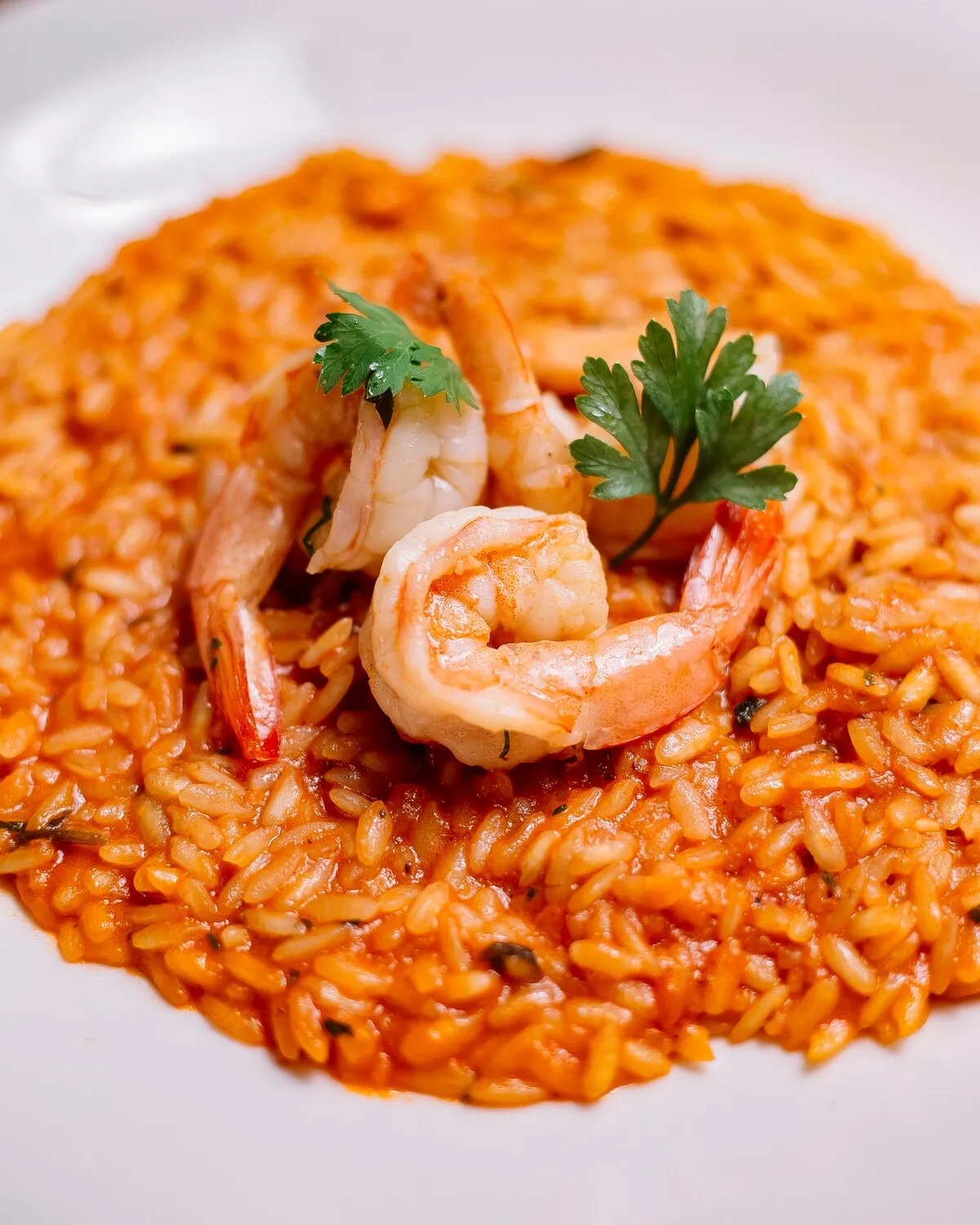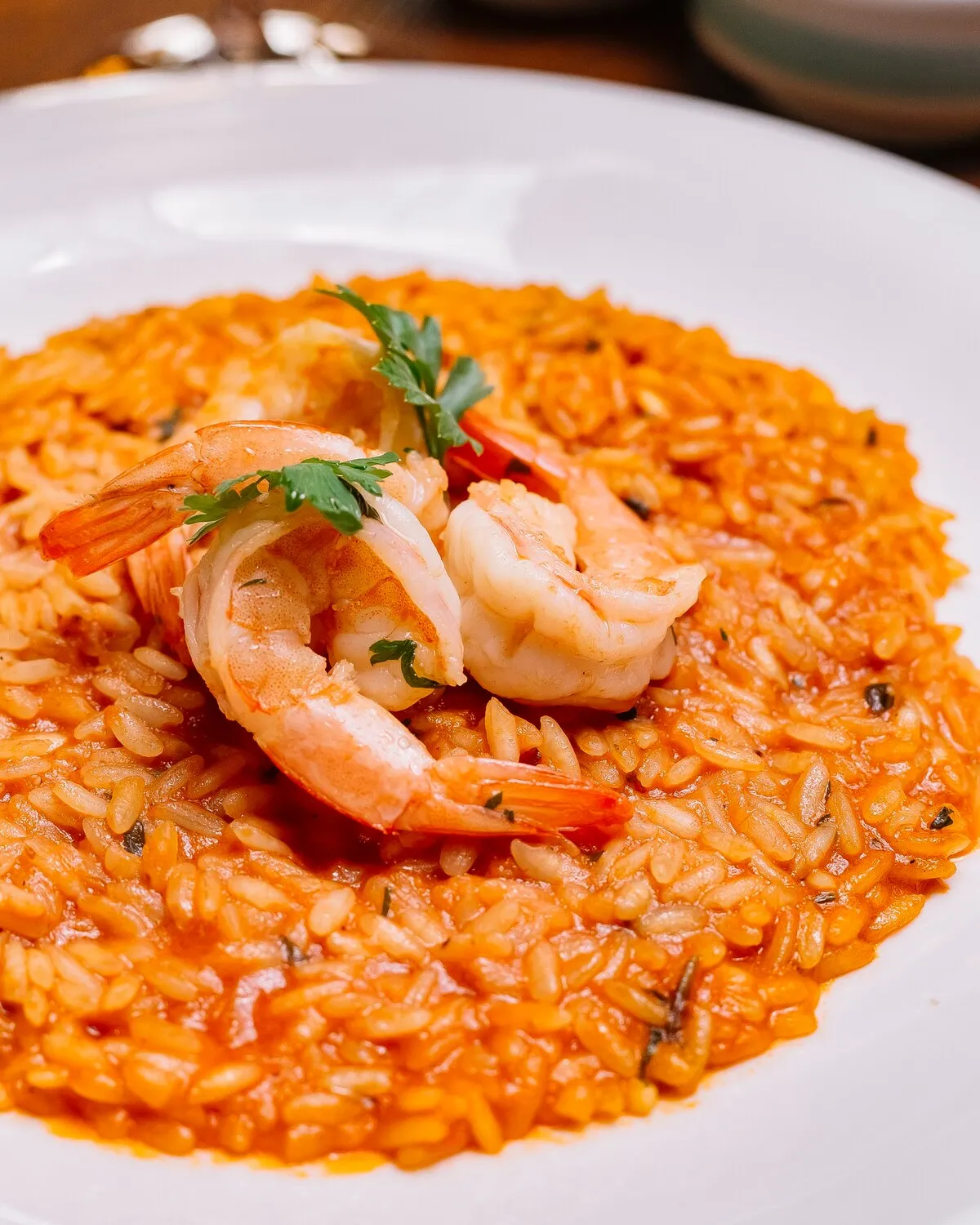
Seafood Risotto
Creamy risotto with mixed seafood.
Nutrition Facts
* The % Daily Value (DV) tells you how much a nutrient in a serving of food contributes to a daily diet. 2,000 calories a day is used for general nutrition advice.
Lagostão
Risotto, in general, originated in Northern Italy, where rice cultivation has thrived for centuries. The introduction of rice to Italy can be traced back to the Arab presence in Sicily, but its cultivation expanded significantly in the Po Valley during the 14th and 15th centuries. Seafood risotto developed as coastal regions incorporated locally sourced seafood into the already established risotto technique, creating a dish that reflects the region's maritime traditions.
Seafood risotto is often associated with special occasions and celebrations in coastal Italian regions.
Regional Variations
Different coastal regions in Italy have their own variations of seafood risotto, using locally sourced seafood and adding regional ingredients. For example, in Venice, you might find risotto nero (black risotto) made with squid ink, while in other areas, you might find it with different types of local fish or crustaceans.
Family Gatherings
It's common to find seafood risotto served during family gatherings and festive occasions, especially in coastal towns. The sharing of this dish symbolizes community and the enjoyment of fresh, local ingredients.
Celebrating the Sea
Seafood risotto showcases the abundance of the sea and reflects the close relationship between Italians and their coastal environment. It's a dish that celebrates the freshness and quality of seafood.
Seafood risotto offers a delightful combination of creamy, savory, and briny flavors.
The creamy texture of the risotto is achieved through the slow addition of broth to Arborio or Carnaroli rice, releasing starches and creating a rich sauce. The seafood component introduces a variety of flavors, from the delicate sweetness of shrimp and scallops to the briny taste of mussels and clams. White wine adds acidity and depth, while garlic, onions, and herbs like parsley and thyme contribute aromatic complexity. A touch of lemon zest brightens the dish and complements the seafood.
Quality Ingredients
Use high-quality Arborio or Carnaroli rice, fresh seafood, and homemade or good-quality seafood stock for the best flavor.
Stock Temperature
Keep the broth warm throughout the cooking process. Adding cold broth can shock the rice and hinder its ability to release starch.
Slow and Steady
Add the broth gradually, stirring constantly, allowing the rice to absorb the liquid before adding more. This is crucial for achieving the creamy texture.
Seafood Timing
Add the seafood towards the end of the cooking process to prevent it from becoming overcooked and rubbery. The type of seafood will change the time needed to cook it through. Shellfish is usually added in the last few minutes.
Mantecaura
The final step of stirring in butter and Parmesan cheese (mantecatura) is important to create a rich and creamy finish. Stir vigorously to emulsify the ingredients.
Explore additional Risotto dishes and restaurants
Explore RisottoDiscover top dining spots and culinary experiences in Macaé.
Explore MacaéLearn more about the food culture, restaurant scene, and culinary heritage of Brazil.
Explore Brazil
